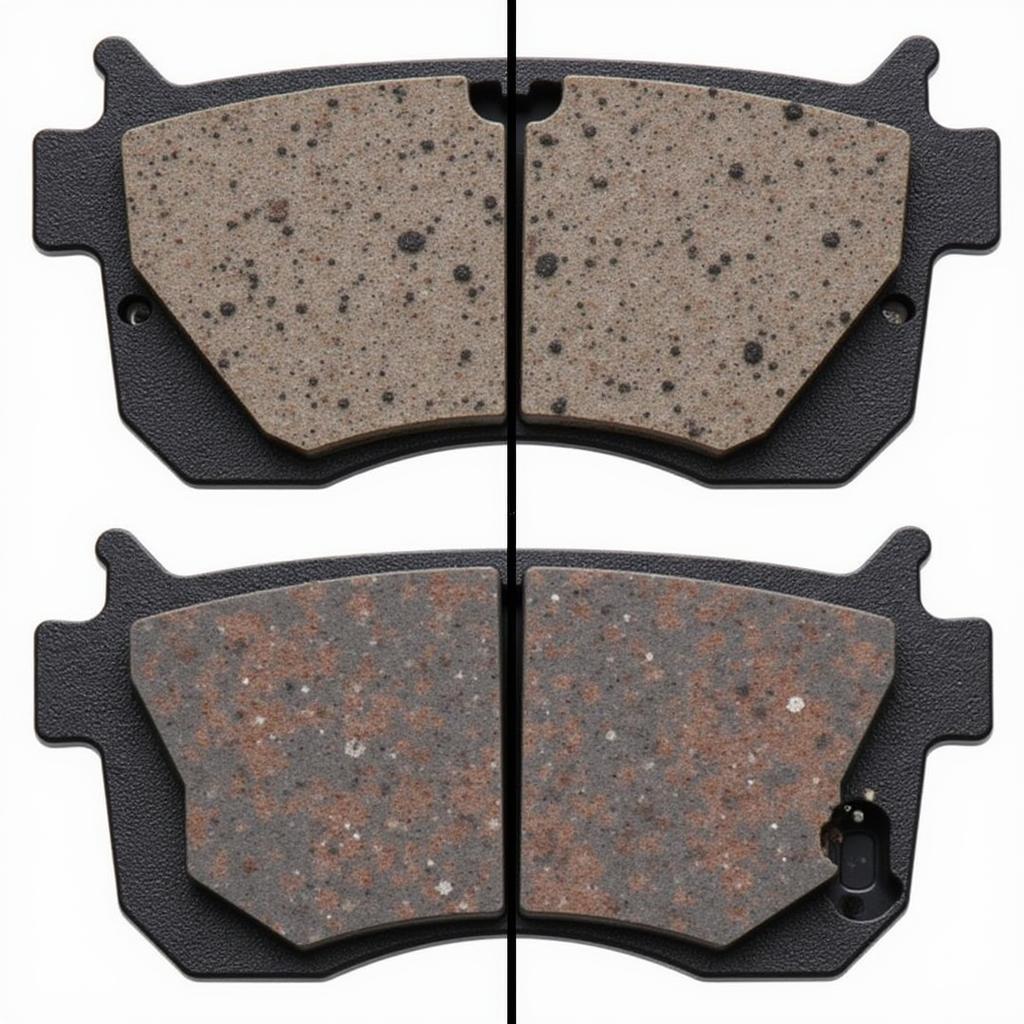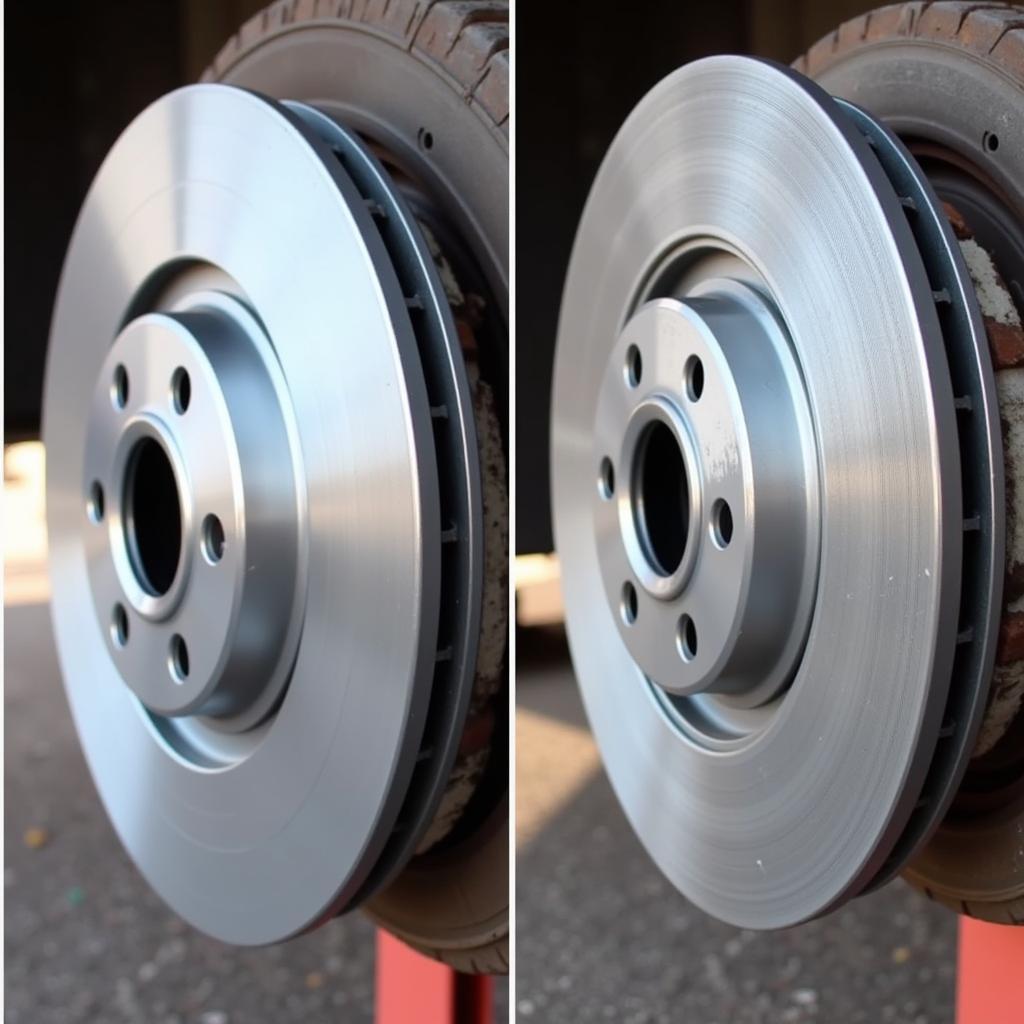The 2017 Honda CRV brake system warning light can be a source of anxiety for drivers. This light can illuminate for various reasons, from something as simple as a low brake fluid level to more complex issues requiring professional diagnostics. Understanding the potential causes and solutions can help you address the problem quickly and safely.
Understanding Your CRV’s Brake Warning Light
The brake system warning light on your 2017 Honda CRV is designed to alert you to potential problems within the braking system. It’s crucial to address this warning promptly to ensure your safety and prevent further damage. Ignoring it could lead to costly repairs or even a dangerous driving situation.
Common Causes of the Brake Warning Light
Several factors can trigger the brake system warning light in your 2017 CRV. These include:
- Low Brake Fluid: This is the most common cause. A leak in the brake lines or worn brake pads can deplete the brake fluid level, triggering the warning light.
- Parking Brake Engaged: Sometimes, the light simply indicates that the parking brake is still engaged. Make sure to disengage it fully.
- Faulty Brake Sensor: The brake system relies on sensors to monitor various components. A malfunctioning sensor can trigger the warning light even if there’s no actual problem.
- ABS Issue: The Anti-lock Braking System (ABS) has its own set of sensors and components. An issue with the ABS can illuminate the brake warning light, often accompanied by the ABS warning light.
- Master Cylinder Problems: The master cylinder is a vital component of the braking system. A leak or internal failure in the master cylinder can cause the warning light to illuminate and significantly reduce braking performance.
What to Do When the Brake Light Comes On
If the brake system warning light illuminates while driving your 2017 Honda CRV, pull over safely as soon as possible. Check your parking brake. If it’s engaged, release it and see if the light goes off. If the light remains on, check the brake fluid level. If it’s low, adding brake fluid might temporarily resolve the issue, but it’s essential to identify the underlying cause of the leak.
Checking Your Brake Fluid
Locating and checking your brake fluid is a straightforward process:
- Open the hood of your 2017 Honda CRV.
- Locate the brake fluid reservoir. It’s typically a translucent plastic container with a black cap.
- Check the fluid level. It should be between the minimum and maximum markings on the reservoir.
- If the level is low, add brake fluid that meets the specifications outlined in your owner’s manual.
When to Seek Professional Help
While some brake issues can be addressed with simple checks and DIY solutions, others require the expertise of a qualified mechanic. If you’re unsure about the cause of the warning light, or if the problem persists after adding brake fluid, it’s best to seek professional help. A mechanic can diagnose the problem accurately using specialized diagnostic tools and perform the necessary repairs.
“Ignoring a brake warning light is like ignoring a ticking time bomb,” says John Davis, a seasoned automotive technician with over 20 years of experience. “It’s crucial to address the issue immediately to prevent potential accidents and costly repairs.”
Remote Diagnostics and Software Solutions
Modern vehicles like the 2017 Honda CRV are increasingly reliant on software and electronic systems. In some cases, a brake system warning light might be triggered by a software glitch or a faulty sensor. Remote diagnostics and software updates can sometimes resolve these issues without the need for physical repairs. This involves connecting the vehicle to a specialized diagnostic tool that can access the vehicle’s computer system and identify any software-related problems.
“Remote diagnostics and software updates are becoming increasingly important in the automotive industry,” adds Maria Sanchez, a software engineer specializing in automotive systems. “They allow us to identify and resolve software-related issues quickly and efficiently, often without the need for a physical visit to the workshop.”
Conclusion
The 2017 Honda CRV brake system warning light is a crucial safety feature. Understanding its potential causes and knowing how to respond can help you maintain the safety and reliability of your vehicle. While some issues might be simple to fix, others require professional attention. Don’t ignore the warning light; addressing it promptly can prevent more serious problems down the road. Regular maintenance and timely inspections are key to keeping your CRV’s braking system in optimal condition.


